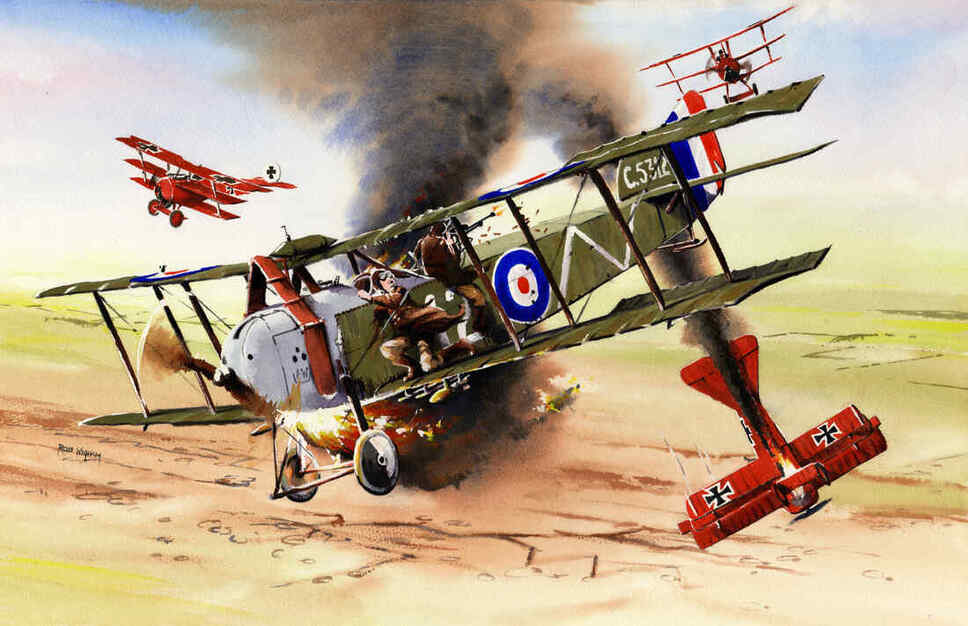'Lt McLeod Wins the Victoria Cross', watercolour, 39 x 28 cm.
In March 1918, Lt Mcleod of No 2 Squadron Royal Flying Corps was piloting an Armstrong Whitworth FK8 when he and his gunner, Lt Arthur Hammond, shot down a Fokker triplane. They were then attacked by eight more, and shot a further 3 down. Mcleod was shot 3 times during the fight; Hammond 6 times. The aircraft was set on fire, which was burning both pilot and gunner. McLeod put the aircraft into a sideslip, which partially kept the flames from them both. As the fire worsened, he jumped out onto the wing, as we see here, punched a hole through the canvas sides of the aircraft, and grabbing the stick in this was he continued to guide the aircraft down. Hammond climbed half out of his cockpit to avoid the worst of the flames while continuing to go on at the attacking triplanes. We see the spent cartridges spilling across the rear fuselage as he fires. McLeod flew the aircraft to a crash landing in no-mans land and dragged his injured gunner from the wreck, pulling him towards the waiting British soldiers who had witnessed the action. Despite Hammond losing a leg, both airmen survived this incident. McLeod, a Canadian, was repatriated to recover from his wounds. Back in Canada, he contracted Spanish Flu, to which he tragically succumbed, like so many of the soldiers who had survived the Great War. He died just 5 months short of his 20th birthday. Written up for a Distinguished Service Order, he was awarded the Victoria Cross, Britain’s highest award for valour in the face of the enemy.
The RAF aircraft of No 2 Squadron still carry the triangular fuselage markings – now on the RAF’s Typhoon fighter based at RAF Lossiemouth - to this day,
The original painting was sold by commission.
